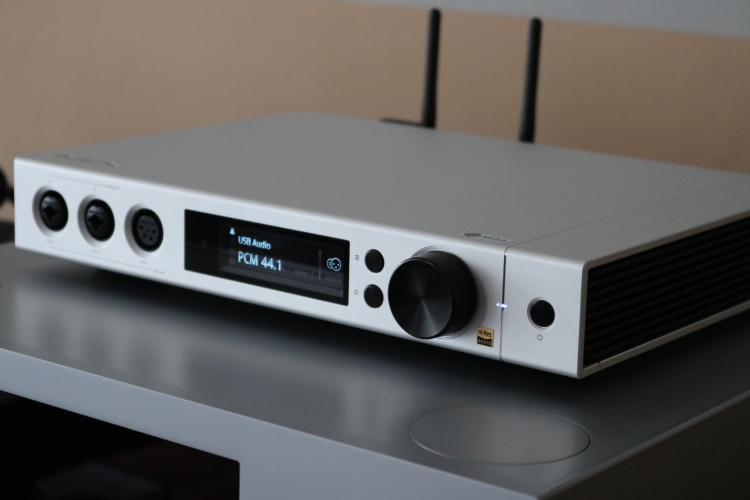
Review samples supplied by Boelsz Audio
Retail price in the Netherlands including 21% VAT: 2.995 euro
The Matrix Element-X could be regarded as an upgraded X-Sabre Pro with added functionality, such as UPnP streaming, Airplay, App-control in addition to IR remote control, Tidal, and MQA. Additionally, the unit contains a dual-mode headphone amplifier consisting of four independent amplifier units. In balanced mode it can drive a pair of balanced headphones or in single-ended mode, it can drive two single-ended pairs of headphones, in which case each has its own independent stereo amplifier. With the ESS ES9038PRO DA converter and the Crystek CCHD-950 femtosecond clock, the brand-new XU216 XMOS processor, and the XU216 XMOS USB chip, the DAC employs hardware of the very latest specifications.
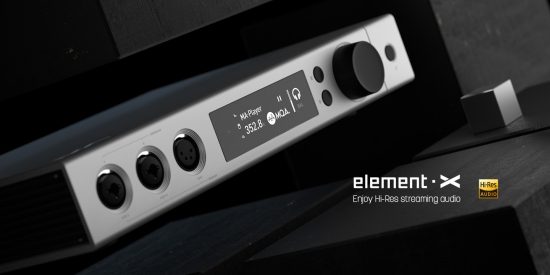
Most DACs use digital volume control, some use passive analog volume control and very few use a properly buffered analog volume control. Matrix has implemented something that I’ve only seen with very expensive DACs such as the CH Precision so far, albeit in a simplified version: a hybrid digital/analog volume control which uses an array of relay-driven resistors in the analog domain, along with digital volume control, the latter as part of the DA chip itself. This way, the digital volume control can always work in its ideal range and it is effectively prevented that too many bits are lost, regardless of the volume setting.
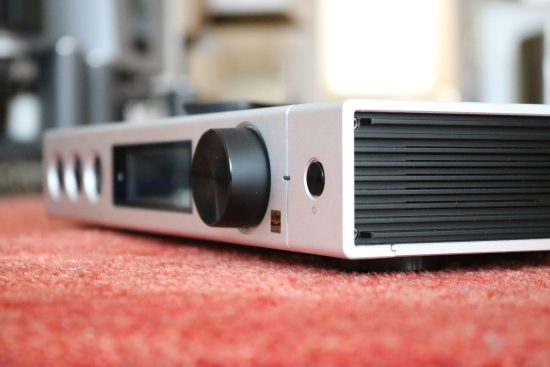
The Element-X will be primarily listened to using my resident Antipodes CX + EX server combo via USB (using the Final Touch Audio Callisto cable), the CH Precision A1.5 amplifier and the Kroma Audio Carmen loudspeakers. Of course, these products are in the silly money category but I know them well and therefore they allow me to make a very accurate assessment of this DAC.
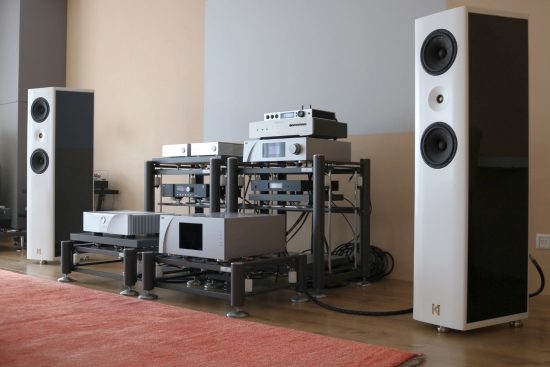
Listening
The Element-X was hardly used when delivered to me and indeed, as it would turn out, it needed some time to come on song. The first day, it sounded refined but thin in the bass, very smooth and not very dynamic, a little bit muffled, actually. But after leaving it powered on, the next day, these effects were gone. The power cable I used was a very neutral Belden 19364 with Bals schuko and Oyaide 004 IEC.
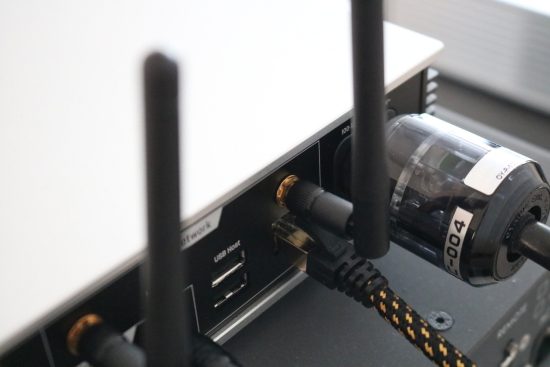
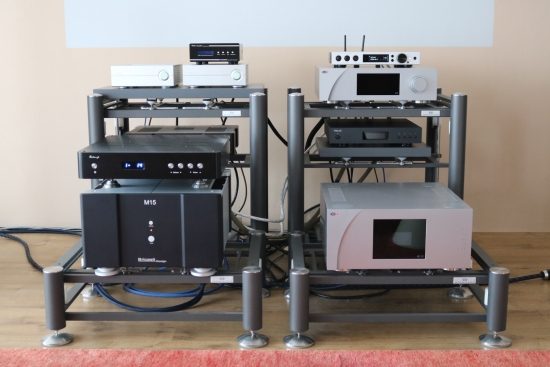
After two days of having been switched on, serious listening commenced, starting with its USB input, fed from the Antipodes CX + EX combo. As I don’t normally use an analog preamp, I used the Audio GD Master 1 and connected the Element-X to its analog inputs using two cables at opposing ends of the audio spectrum: the smooth and fluid Final Touch Ganymede and the bold and expressive Vermouth Reference, the former only in XLR but the latter in XLR as well as in cinch. The Element-X has independently buffered outputs and after a quick comparison, I’d say that they are of equal quality.
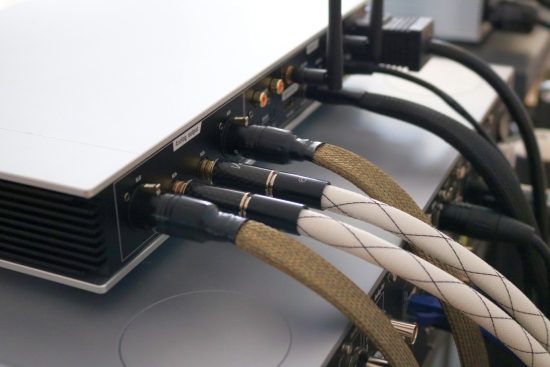
Now the Element-X showed real promise. Its sound is clean and refined and easily transparent enough to allow analytical listening but it is not hard or etched and it is also precisely smooth enough to not tip over into a clinical delivery. I don’t have the X-Sabre Pro at hand for a direct comparison but an important aspect of sound in which that DAC performed less well, timbre, has been taken care of, the Element-X sounding perfectly natural. Another aspect that I noticed with the X-Sabre Pro, however, is still present in the Element-X but it is something that seems to be present in pretty much all delta/sigma DACs: the feeling of the sound being slightly filtered/processed, an effect that others might refer to as veiled. The latter term suggests that there is a feeling of a piece of cloth hanging between performance and listeners but that’s really too strong an expression. In this case, I’d say that it is a bit like listening to speakers with their grilles on, rather than removed. So, it is quite subtle.
To put it differently, great multi-bit DACs can sound purer (more direct-coupled) and really good ones are purer as well as more energetic. The thing is: it is much more difficult to make a good multibit DAC than it is to make a good Delta/Sigma DAC and this results in a more expensive product. It’s also noteworthy that not all people are very sensitive to this so, unless expressiveness and transient sharpness are very important for you, this slight reservation may be taken with a pinch of salt.
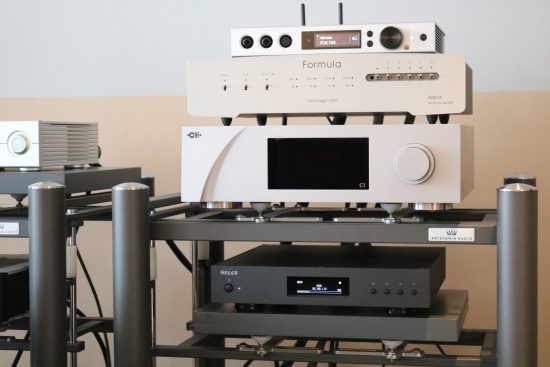
As can reasonably be expected, the discrete R2R Aqua Formula xHD DAC removes the speaker grilles so to say. It sounds purer, more natural, and is more refined, most audibly in the treble, but at an eye-watering cost. The Element-X is smooth overall but just slightly rough in the treble. It’s not at all hard or harsh, just a tiny bit raspy whereas the Formula is entirely airy and fluid, with Retina-like treble behavior. Still, the Element-X sure has a superb resolution in general and I really can’t say that I hear more details with the Aqua or even the CH Precision C1.
I don’t have the Audio GD R8 here anymore for direct comparison but from earlier experience, I know that this R2R DAC offers a large portion of the Formula xHD’s sound at a considerably more decent cost. The R8 is just as unfiltered and expressive as the Aqua but less refined and actually, in retrospect, probably not better in the treble than the Element-X. Also, the R8 is only a DAC. It has no volume control and, frankly, does not begin offering the wealth of options that the Element-X does.
The Element-X is DSD-capable and, as often happens with Delta/Sigma converters, chances are that it performs even better with this format. However, DSD is not something that I actively use and since this was a bit of a rush review, I opted to not investigate this.
Whether this last bit of direct expressiveness is required depends on personal taste but perhaps even more on the partnering equipment. For instance, will the Element-X be used with an external preamp or by itself, directly into a power amp or even into active speakers?
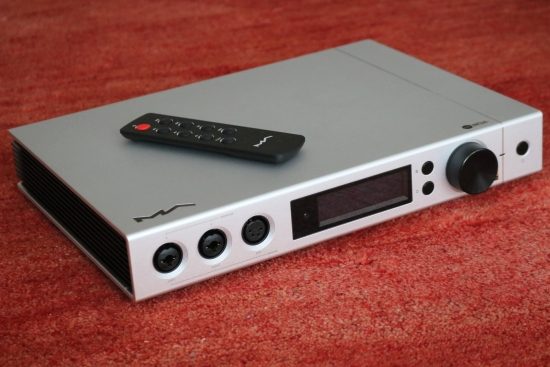
Without analog preamp
After removing the Audio GD preamp from the path, the Element-X does sound more transparent and purer indeed. Transients become shorter and more immediate, making the bass sound more articulate and snare drums more direct, with no reduction in perceived resolution. However, along with this also comes a feeling the sound being cooler, less rich, less smooth. Of course, one could argue, this is simply the coloration and distortion of extra components in the signal path, in this case, the Master 1 and a set of interlinks, being removed. Indeed, some preamps add a lot of character themselves or round off the sound but the Audio GD is pretty transparent. Apparently, what it does add is some more fluidity and a subtly enrichment of harmonic textures while still sounding very natural. Either way, technically, the Element-X simply sounds purest and most transparent without an extra preamp.
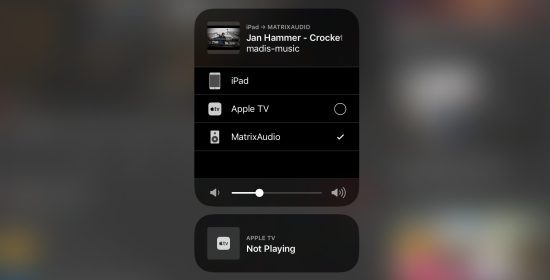
Airplay on iPad
UPnP and Airplay
At first, I could not figure out how to connect to the Element-X using UPnP or Airplay. The device would not show up as a Renderer, despite it having been assigned an IP address. As it turns out, one has to choose between USB mode and non-USB mode in the unit’s setup menu and only in the latter mode, will UPnP and Airplay work.
Using Ethernet and the Melco N1ZH NAS as a source, UPnP worked perfectly using Bubble UPnP and Hi-Fi Cast on Android and mconnect, Linn Kazoo, and Kinsky on iPad.
Network sound and USB sound usually sound different, even with esoteric hi-fi, and here that was also the case. UPnP sounds fluid and relaxed, slightly sweeter and gentler, less solid and forceful, than via USB. It’s pretty much on par with earlier experiences of devices in the Element-X’s price class, though, and really only bettered by audio components costing silly money, such as the CH Precision C1 and Bricasti M21. For the fullest and most solid bass and richest tonality, an Antipodes server is the best option but it adds serious money: the cheapest current model being around 5000 euro. Honestly, I don’t know if the difference between USB and Network would be as large if a very affordable server of, say, 1000 euro or less, was used. Or a Laptop or a Mac Mini or something like that. In that case, the differences between network and USB might be negligible and it might be a case of siding with whichever solution offers more convenience.
Airplay worked flawlessly and sounds as good as I have heard it, which really is much better than can reasonably be expected.
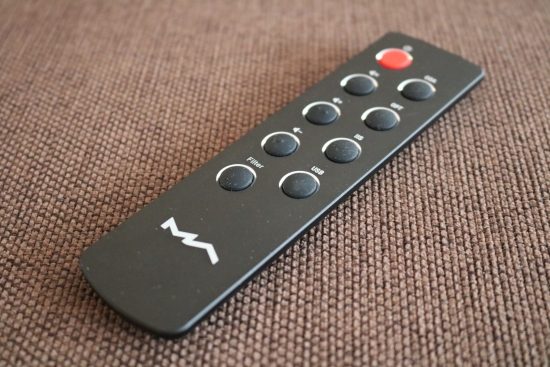
Direct USB playback
Many DACs can play from a USB drive but the Element-X goes one step further. I have not tried this but when connecting an SD card or USB drive to the slots on the back, the unit creates a library of the content which then can be conveniently browsed by Folder or by tags such as Artist, Album, Genre, and such, using the MA Control App.
MA Remote App and network selection
There is a dedicated MA Remote APP that can be downloaded via the Matrix Audio website (after having scanned the QR code in the manual if you have a compatible device). At this moment, the app cannot yet be found in the Play store but that will be a matter of time. Importantly, this app allows the user to switch between wired Ethernet and Wi-Fi, something that is not possible to do on the device itself.
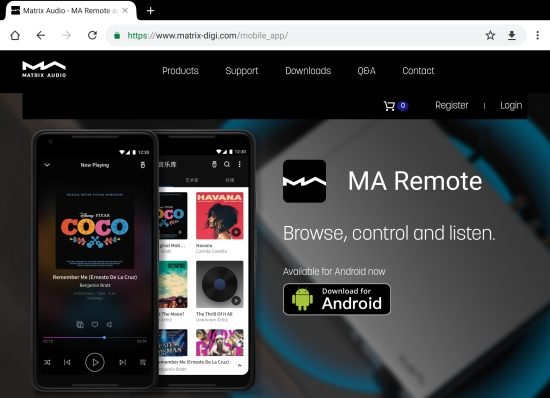
The MA Remote Android App can be downloaded on the Matrix website
Conclusion
The Element-X is a well-built DAC with a superb finish and a large array of options. Containing the latest spec hardware, it provides a clean and neutral sound with superb resolution and transparency, enabling analytical listening but also having just the right amount of smoothness to avoid it tipping over into sounding clinical.
External Links
Manufacturer: matrix-digi.com
Distributor for the BeNeLux: Boelsz Audio






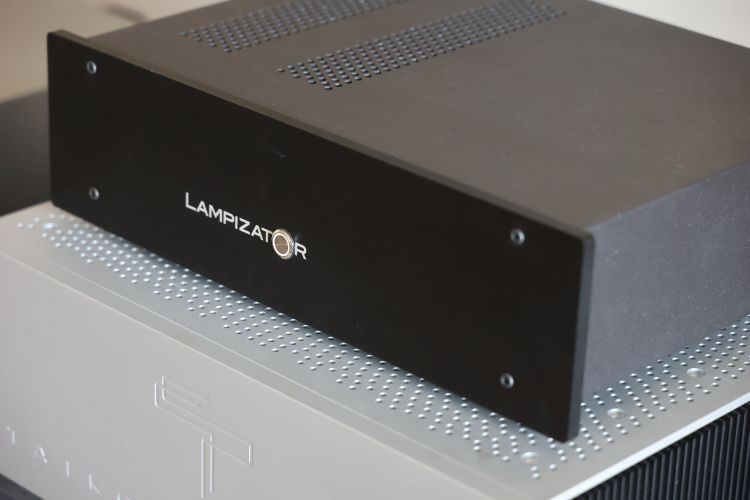
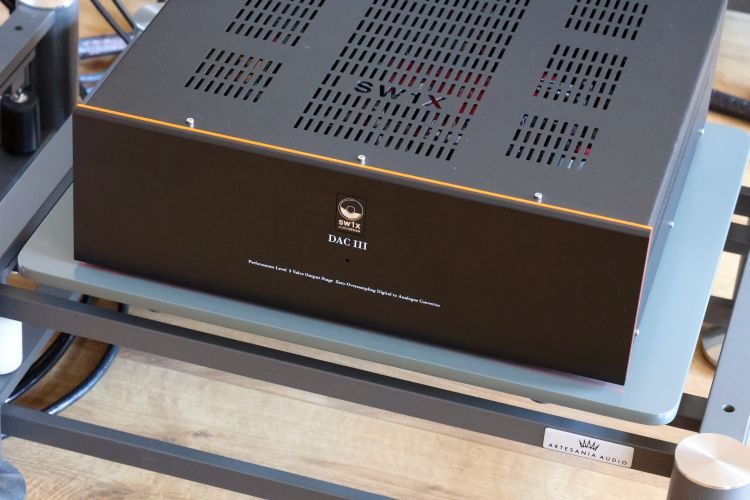
Christiaan,
thanks for the great review. Only a few weeks before this review you had de Audio-GD R8.
could you tell me how they compare soundwise?
thnx
Jaap
They are quite different. One is a bitstream converter and the other a discrete ladder DAC. It is unfiltered and also sounds that way, which, for me, is a good thing but it might not be everyone’s cup of tea. In essence, the Audio-GD is purer, gentler, and more transparent than the Matrix. The Matrix has a bolder sound with more slam and it offers a lot more functionality but in line with its design principle, it sounds less pure and direct and just a little filtered. Depending on your setup, that might actually be a good thing, especially when no analog preamp is added.
I am now testing the element X at home with luxman tube amp, and i find the review spot-on.
The only difference is subjective. I find this DAC really clinical and not engaging. Something feel artificial. Instruments sounds cold and unrealistic.
Currently a 10 years old dac by luxman is less detailed, but far far more engaging and dynamic, and…..fun to listen to.
Thanx Christiaan , that is just what a was looking for.
From your memory of the Meridian 818v3, could you say how it would compare to this, please? I own the Meridian but need a (less expensive!) Roon network DAC for a second room – ideally the closest to the Meridian ‘house sound’ without breaking the bank!
Hi James, I reviewed these many years apart so I can’t give specifics. Nevertheless, I feel that they sound quite different and I would prefer the 818. The Matrix is likely every bit as detailed (if not more so) but also much tighter, the Meridian more relaxed. If you like the Meridian sound, why not get an MS600? I see these now and then on the second-hand market.
Hi Christian, thanks for this – its a bit what I expected (the Matrix having a very clean sound, the Meridian warmer and more engaging). I love my 818, but never got on with the MS600, so the hunt continues! It seems hard to find warm, musical streaming DACs at the lower end of the market, which are still dynamic and thrilling – the 818 combines all of this, which is fairly rare in my experience.
You’re right, an MS600 is no 818. Indeed, I would not know of a similarly performing streaming DAC as the 818 on the affordable end of the spectrum. Nowadays, most DACs focus on, well, focus:-) Maybe your best shot is to combine a cheap and simple network endpoint with a legacy DAC of your choosing. Since you like the 818, which in my terms is not really warm but organic and a little relaxed yet highly refined and transparent, you might like the Audio GD R8 DAC or the Denafrips Venus. I consider these two DACs to be the best performers in the not-arm-and-leg category. Also, you might like the Bryston BDP 3.14 network DAC. It’s solid but also smooth and while not quite as airy and refined as the Denafrips and Audio GD it is very musical and non-fatiguing.
Hi Christian, yes, I agree ‘warm’ doesn’t adequately describe the 818’s merits, which you have summed up much more accurately! Thanks for the recommendations, I’ll check all those out. That’s a very good idea to try a network endpoint (hm, which one, though, as I’m sure this makes a difference to the sound – Allo Digione Signature, maybe??) with a legacy DAC. I know I like the Meridian 568.2 – similar tonally/dynamically to the 818 just ‘less of everything’, or thinking about it, an 861v4/LPSU/ID40 is very close to the 818 tonally, not quite as organic overall, or as refined at the top end, but close, and can be picked up now for 1/4 818 price. And the ID40 means Roon networking is built-in…